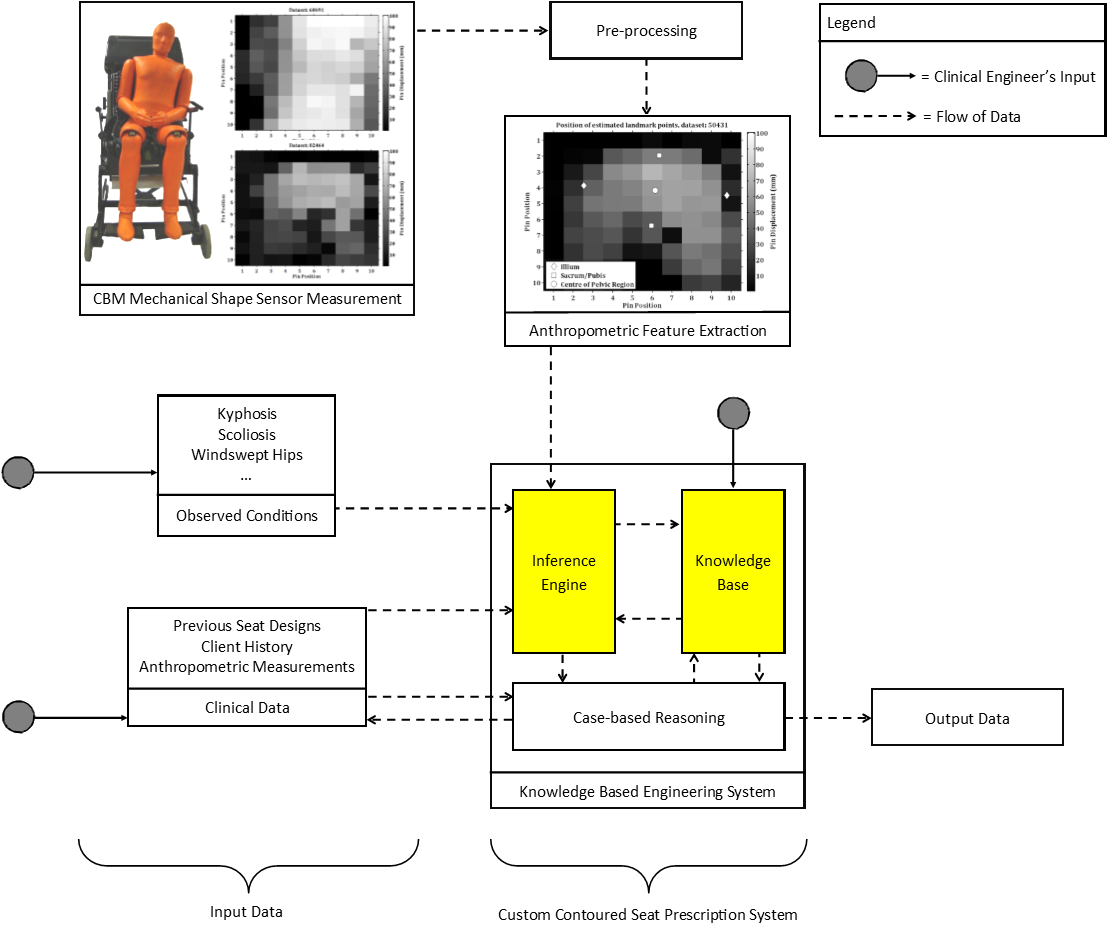A Knowledge Based Engineering System for Custom Contoured Seating
The main aim of the proposed research project is to develop a clinically and cost cost-effective technique of producing special seats and wheelchair systems that is technology-based rather than purely skills-based whilst maintaining an acceptable level of risk. The proposed research focuses on the needs of populations with specific requirements for postural and pressure management. The proposed system with Knowledge Base Engineering (KBE) at its core integrates the special seating design process into a single, comprehensive computer model.
A database of rules that describe how the seats are designed, analyzed and manufactured will be developed. These rules can be design rules, standard engineering rules, or heuristic and experiential ‘rules of thumb’, which reflect many years of design and clinical experience. The rules are expressed in the form of physical equations, graphs and tables describing the attributes of the seat such as geometry, functional constraints, material type etc. The generic modification formulas, dependent on parameters like age, body weight, body shape, tissue viability and muscle tone are implemented as part of the Inference Engine to eliminate the need for extraordinary skill and experience on the part o f the clinical engineer and the trial and error process. A structure of the KBE system is shown in Fig. 1.

Figure 1. A Knowledge Based Engineering System for Custom Contoured Seating
First of all, a clinical engineer using the system inputs a client’s data (including medical diagnosis, musculoskeletal deformity, muscle tone, sensory impairments, seating ability, postural needs etc).
Then, the geometry of the client’s posterior is transferred to the KBE system and analysed in real-time.
The specialised Anthropometric Feature Extraction Module computes set of anthropometric parameters such as:
spinal curvature, pelvic obliquity, rotation, and inclination angles, weight distribution, pressure peaks etc.
The Client Classification module abstractly assigns the clients into one of many categories according to their musculoskeletal characteristics and medical diagnosis.
A repository of the previous designs is used to retrieve the relevant cases and exploit analogies and similarities with previously solved cases combined with clinical data.

Figure 2. Testing the Feature Extraction Module using Anthropometric dummy.

Figure 3. Testing the Feature Extraction Module using Anthropometric dummy.
References:
- Kulon, J., Partlow, A., Gibson, C., Wilson, I. and Wilcox, S. J., “Rule-Based Algorithm for the Classification of Sitting Postures in the Sagittal Plane from the Cardiff Body Match Measurement System,” Journal of Medical Engineering and Technology, vol. 38, no. 1, pp 5-15, 2014. DOI: 10.3109/03091902.2013.844208
- Partlow A., Gibson G., Kulon J., Wilson I., Wilcox S. Pelvis feature extraction and classification of Cardiff body match rig base measurements for input into a knowledge-based system, Journal of Medical Engineering & Technology, vol. 36, no. 8, pp. 399-406, Nov. 2012. DOI: 10.3109/03091902.2012.712202
